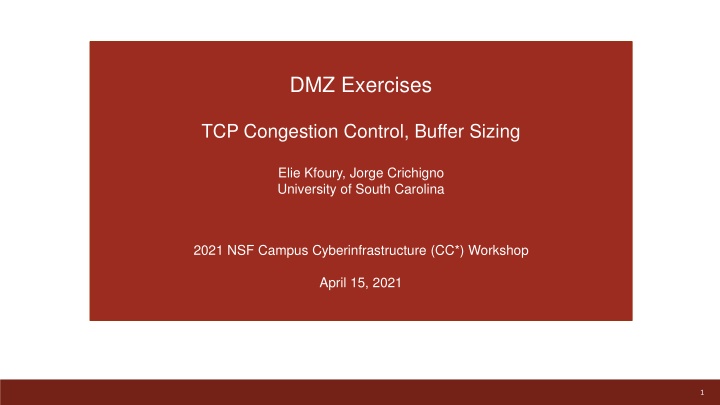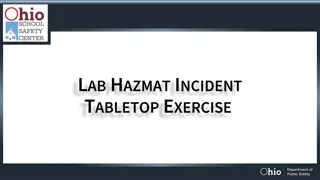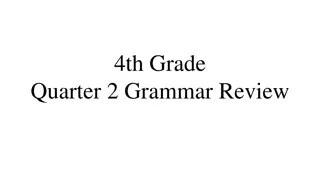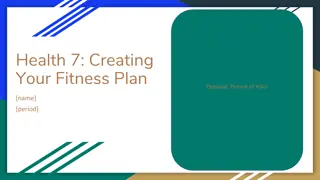DMZ Exercises
The DMZ Exercises focus on TCP congestion control and buffer sizing, offering lab series to help students gain practical skills in network performance and measurement tools. Explore emulated WAN infrastructure, real protocol stacks, and lab experiments covering various topics like router buffer size, TCP rate control, WAN scenarios, and active queue management algorithms.
Download Presentation

Please find below an Image/Link to download the presentation.
The content on the website is provided AS IS for your information and personal use only. It may not be sold, licensed, or shared on other websites without obtaining consent from the author.If you encounter any issues during the download, it is possible that the publisher has removed the file from their server.
You are allowed to download the files provided on this website for personal or commercial use, subject to the condition that they are used lawfully. All files are the property of their respective owners.
The content on the website is provided AS IS for your information and personal use only. It may not be sold, licensed, or shared on other websites without obtaining consent from the author.
E N D
Presentation Transcript
DMZ Exercises TCP Congestion Control, Buffer Sizing Elie Kfoury, Jorge Crichigno University of South Carolina 2021 NSF Campus Cyberinfrastructure (CC*) Workshop April 15, 2021 1
Content NTP lab series Organization of lab manuals Exercise 1: TCP congestion control Exercise 2: Buffer sizing 2 DMZ exercises
NTP Lab Series The lab series provides learners an emulated WAN infrastructure operating at high speeds and devices running real protocol stacks It helps students to acquire hands-on skills on Performance and measurement tools Configuration of devices for high-speed networks Emulate scenarios using real protocol stacks 3 DMZ exercises
NTP Lab Series The lab series can be partitioned into three parts Measurement (throughput, latency, packet loss) and emulation (link bandwidth, buffer size, delay) tools TCP features for high-speed transfers, router buffer size Active Queue Management (AQM) algorithms 4 DMZ exercises
NTP Lab Series Lab experiments Lab 1: Introduction to Mininet Lab 11: Router s Buffer Size Lab 2: Introduction to iPerf Lab 12: TCP Rate Control with Pacing Lab 3: WANs with latency, Jitter Lab 13: Impact of Maximum Segment Size on Throughput Lab 4: WANs with Packet Loss, Duplication, Corruption Lab 14: Router s Bufferbloat Lab 5: Setting WAN Bandwidth with Token Bucket Filter (TBF) Lab 15: Hardware Offloading on TCP Performance Lab 6: Traditional TCP Congestion Control (HTCP, Cubic, Reno) Lab 16: Random Early Detection Lab 7: Rate-based TCP Congestion Control (BBR) Lab 17: Stochastic Fair Queueing Lab 8: Bandwidth-delay Product and TCP Buffer Size Lab 18: Controlled Delay (CoDel) Active Queue Management Lab 9: Enhancing TCP Throughput with Parallel Streams Lab 19: Proportional Integral Controller-Enhanced (PIE) Lab 10: Measuring TCP Fairness Lab 20: Classifying TCP traffic using Hierarchical Token Bucket (HTB) 5 DMZ exercises
Organization of Lab Manuals Each lab starts with a section Overview Objectives Lab settings: passwords, device names Roadmap: organization of the lab Section 1 Background information of the topic being covered (e.g., fundamentals of TCP congestion control) Section 1 is optional (i.e., the reader can skip this section and move to lab directions) Section 2 n Step-by-step directions 6 DMZ exercises
Exercise 1: TCP Congestion Control 7 TCP Congestion Control
TCP Traditional Congestion Control The principles of window-based CC were described in the 1980s1 Traditional CC algorithms follow the additive-increase multiplicative-decrease (AIMD) form of congestion control Sender Receiver Seq = 110, 10 bytes Seq = 120, 10 bytes Seq = 130, 10 bytes Seq = 140, 10 bytes Ack = 110 Packet loss Additive increase Multiplicative decrease Sending rate Out-of-order segments Triple duplicate ACK Ack = 110 Ack = 110 Time Seq = 110, 10 bytes Time 1. V. Jacobson, M. Karels, Congestion avoidance and control, ACM SIGCOMM Computer Communication Review 18 (4) (1988). 8 TCP Congestion Control
BBR: Model-based CC TCP Bottleneck Bandwidth and RTT (BBR) is a rate-based congestion-control algorithm1 BBR represented a disruption to the traditional CC algorithms: is not governed by AIMD control law does not the use packet loss as a signal of congestion At any time, a TCP connection has one slowest link bottleneck bandwidth (btlbw) probe Sending rate 125 Router Sender Receiver btlbw 100 75 drain Bottleneck (btlbw) Output port buffer Time cycle 1 cycle 2 ... 8 RTTs 1. N. Cardwell et al. "BBR v2, A Model-based Congestion Control." IETF 104, March 2019. 9 TCP Congestion Control
Lab Goal and Topology Modify the TCP congestion control algorithm in Linux using sysctl tool Deploy emulated WANs in Mininet Compare the performance of TCP Reno and TCP BBR in high-throughput high- latency networks Lab topology: 10 TCP Congestion Control
TCP Buffer Size In many WANs, the round-trip time (RTT) is dominated by the propagation delay To keep the sender busy while ACKs are received, the TCP buffer must be: Traditional congestion controls: TCP buffer size 2BDP BBRv1 and BBRv2: TCP buffer size must be considerable larger than 2BDP 11 TCP Congestion Control
Exercise 2: Buffer Sizing 12 Buffer Sizing
Buffer Size The router s buffer plays an important role in absorbing traffic fluctuations Buffers avoid losses by momentarily buffering packets as transitory bursts dissipate Router Sender Receiver Bottleneck (btlbw) Output port buffer 13 Buffer Sizing
Buffer Size The rule of thumb has been that the amount of buffering (in bits) in a router s port should equal the RTT (in seconds) multiplied by the capacity C (in bits per seconds) of the port1: Router s buffer size = C RTT 1. C. Villamizar, C. Song, High performance TCP in ansnet, ACM Computer Communications Review, vol. 24, no. 5, pp. 45-60, Oct. 1994. 14 Buffer Sizing
Buffer Size The rule of thumb has been that the amount of buffering (in bits) in a router s port should equal the RTT (in seconds) multiplied by the capacity C (in bits per seconds) of the port1: Router s buffer size = C RTT When there is a large number of TCP flows passing through a link, say N, the amount of buffering can be reduced to2: Router s buffer size = C RTT / (N) 1. C. Villamizar, C. Song, High performance TCP in ansnet, ACM Computer Communications Review, vol. 24, no. 5, pp. 45-60, Oct. 1994. G. Appenzeller, I. Keslassy, N. McKeown, Sizing router buffers, in Proceedings of the 2004 conference on Applications, technologies, architectures, and protocols for computer communications, pp. 281-292, Oct. 2004. 2. 15 Buffer Sizing
Bufferbloat Bufferbloat is a condition that occurs when the router buffers too much data, leading to excessive delays 1. N. Cardwell, Y. Cheng, C. Gunn, S. Yeganeh, V. Jacobson, BBR: congestion-based congestion control, Communications of the ACM, vol 60, no. 2, pp. 58-66, Feb. 2017. 16 Buffer Sizing
Lab Goal and Topology Understand the buffering process in a router and buffer sizing Explain the concept of Bufferbloat Modify routers buffer size to solve the bufferbloat problem Lab topology: 17 Buffer Sizing























